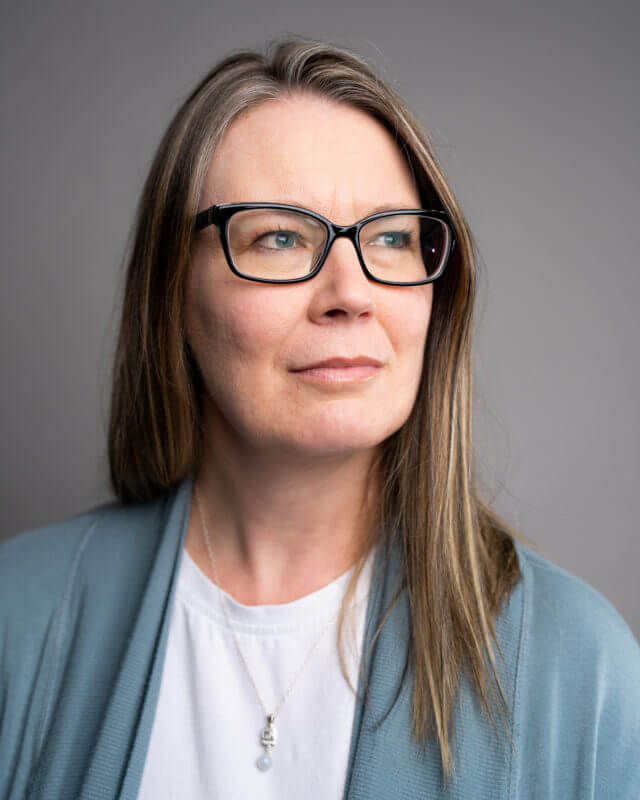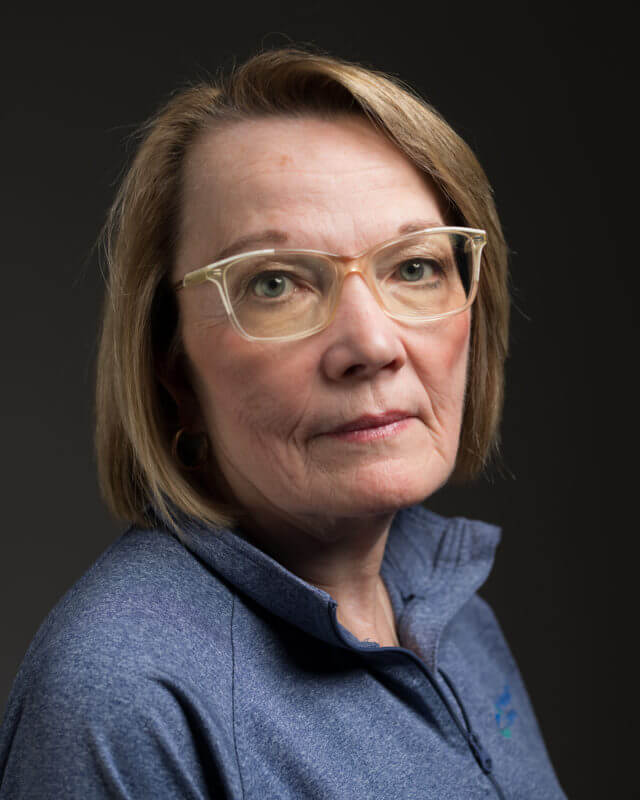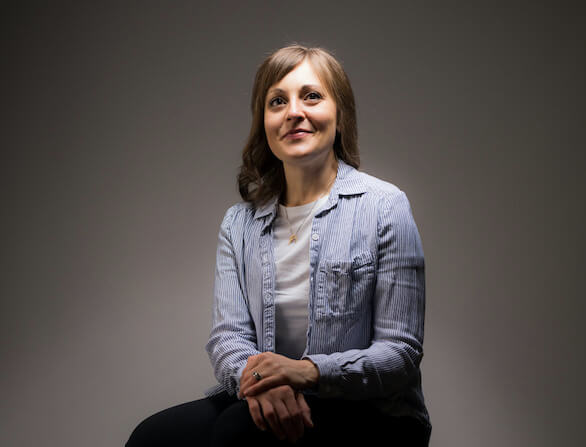Regional Caregivers
Caring for our communities

Ulrika Wigert, MD
In Sauk Centre, we had a really interesting journey. It goes back to November of 2020 – that’s when Sauk Centre became a COVID-only hospital to support St. Cloud. Because in that surge – during that fall and winter of 2020 – St. Cloud was becoming very, very full. So it became clear that within a very short period of time, the best way to help support St. Cloud was to take those COVID patients that we could care for in our facility that needed oxygen, but didn’t need a ventilator.
It was about five or six weeks that we kind of turned things upside down.
Ulrika Wigert, MD
So we only took care of COVID, we created a hospitalist model, and our OB patients delivered at Melrose during that time. If we had admissions that weren’t COVID, they went to Melrose or Long Prairie or one of the other sites and we worked together to then take their patients if St. Cloud was full. So we really gained our skills during that time.
We had patients that we were able to care for, because we had to, and the nurses stepped up to the plate. It’s hard, it’s scary, but we just did it day by day, and that’s the wisdom of the team. CentraCare quickly set up ways that we could lean on respiratory therapists in Monticello to help us with patients that we couldn’t transfer out that were on a ventilator for a day to a week.
We also created a hotline for the nurses to contact the ICU nurses in St. Cloud, so it was a lot of learning, a lot of education, and a lot of support that we gathered through that.
The most important thing that’s come out of this is the teams and the connections, because no matter what, nobody could get through this on their own. You have to lean on your colleagues; you have to lean on your colleagues in your local site – the people that are next door to me in my office – yet also lean on those colleagues that are in Melrose, Long Prairie, and St Cloud. Those connections you didn’t know you had before that are there in the background, and the people leaning on each other, is what has been most healing and most useful to get through each day.

Deb Peterson, MD
In a small hospital we have a lot of very young nurses; it’s often their first job out of training. And they needed to feel like they were doing a good job when it felt to them like they really weren’t, because they felt like they were in over their head. So I was cheerleading along with taking care of the patients, when often I was also scared to death, because they were some very, very sick people.
We had people in the hospital for weeks that ultimately recovered, but were still quite ill.
Deb Peterson, MD
So I look back, and I think, ‘wow, did we really do it?’ And we did. I learned a lot about medical care, I learned a lot about myself and how to remain resilient. It’s been a journey.
We each had patients that were what you call ‘maxed and stacked.’ They were maxed out on heated high flow, plus they had a nasal cannula underneath, and there was nowhere to send them. And we had to make decisions about whether to intubate or not, because if we intubate we have the vent, but we don’t have a respiratory therapist or the technology to really keep the patient, and is it in the patient’s best interest? So the MOD physician from CentraCare was very, very helpful at kind of handholding with us, helping us make decisions. Having someone else in your corner helping you with that was really helpful. I can’t say enough about it.
I’m not sure that people actually understood how many really, really sick people stayed in Redwood Falls, Litchfield, Paynesville and other western regional hospitals, because of the bed situation. I’m not sure the public actually understands or knows how many really, really sick people we took care of, because you don’t go out and talk about it. And I think people got tired. People that were sick of the pandemic just went into their shell and just didn’t want to hear about it anymore. They went back to what they considered their normal life. So there is a lot of stuff that went on, that we know about, that the general public will never really understand.

Angie Paschke, APRN, CNP
I work in the ER in Sauk Centre from 5 p.m. to 8 a.m., so I have a 15-hour overnight shift. There were nights when we had some really sick patients with nowhere for them to go.
I would call 26 hospitals, and they would say, ‘sorry we can’t help you, good luck.’ And I thought, okay, what are we gonna do.
Angie Paschke, APRN, CNP
Recognizing there was this need led to the formation of the Medical Officer of the Day (MOD) huddles, which helped make CentraCare feel like one big campus. The payoff for me personally is understanding. It is very frustrating if you don’t know what’s going on. You’re out at this regional site, and you’re like, ‘How can the central people not help us? This person is so sick, they do not belong here with me, they need the intensivist. Then, on this call, you’re like, oh, that’s why they can’t help me – they are drowning themselves.
The teamwork and communication has been the most humbling part to me. My nurses, good lord, the amount of stuff they’ve learned. And the fact that people will call and check on you to ask, ‘Are you okay today?’ Oh my gosh, it’s huge for me as an APP and for the physicians, it just helps create that more collaborative care of our patients. And that’s what I see as the future of CentraCare. It’s teamwork.

Cindy Firkins Smith, MD
One thing that is unique to rural frontline health care workers is that in a small community, everybody knows everybody. So the person who’s coming in, and is critically ill, is oftentimes your neighbor, your friend, or your family member.
So you’re not only trying to save someone’s life, but you’re trying to save someone’s life that you know, and you love and you care about and you live beside.
It creates another layer of emotion, commitment, fear and distress when you feel like you can’t do enough.
Cindy Firkins Smith, MD
We are committed to taking the lessons that we learned from COVID and optimizing them to be better moving forward. What we learned was that with the right support, we could do a lot of things in local hospitals and in local communities that we didn’t think we could do before. And we could do them safely, economically, with people living in those communities delivering the care, and with local families there to support their loved one.
Because the further you have to send a patient away from their home, the more challenging it is to have that support. People want to stay close to home if it’s safe for them and if they can get great care. We will always need a tertiary and quaternary care hospital for really complicated things, and we need to make sure that the complicated things go to the tertiary and quaternary hospitals.
But we don’t want to fill up those hospitals with things that can be taken care of in a critical access hospital or a community hospital. So we’re committed to not snapping back to the way it was before. We want to keep care local when it’s the right thing to do. And that will help us enable St. Cloud Hospital to be available for the patients that really need it.


Thank you all for sharing your heart with us.